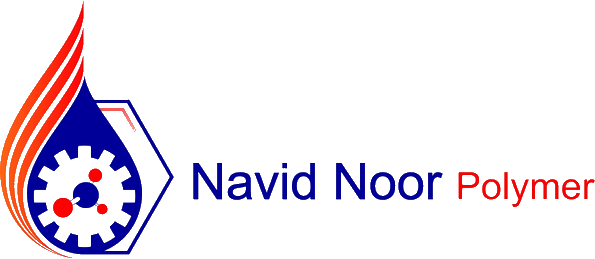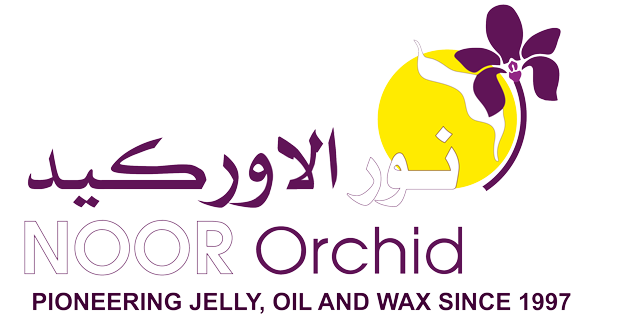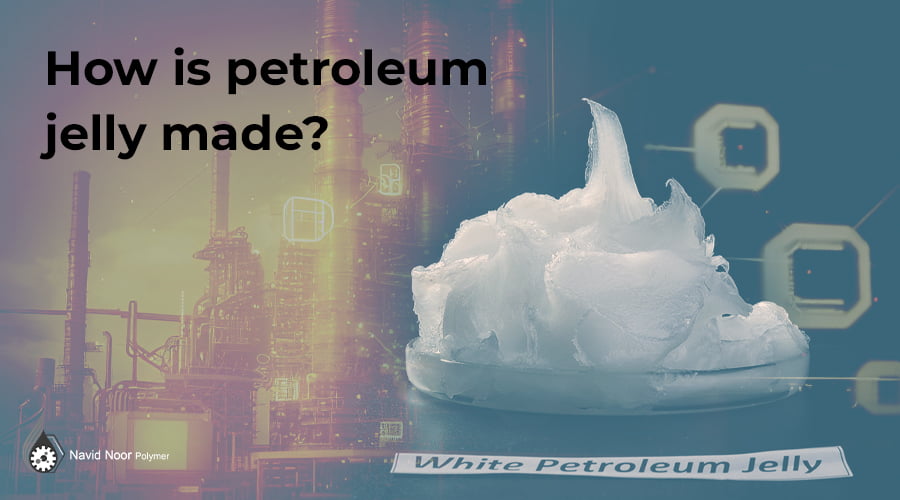The Complete Guide on Petroleum Jelly: From Production to Uses: Manufacturing Included
Introduction: The Elastic Wonder of Petroleum Jelly
For more than a century, a mainstay in homes, petroleum jelly has enthralled both consumers and businesses for its amazing adaptability. I’ll take you on a trip from its modest origins to its contemporary uses as I explore the interesting universe of this semi-solid combination. We will discover the science underlying its manufacture, refute popular misconceptions, and highlight its many applications in many fields across this investigation. Whether your interest is skincare, pharmaceuticals, or just general knowledge of this ubiquitous chemical, this thorough guide will provide insightful analysis of the beauties of petroleum jelly.
1. can find The Discovery and Development of Petroleum Jelly
1.1 A Serendipitous Discovery
Midway through the 19th century, amid the growing oil business, the history of petroleum jelly starts. When I consider its beginnings, I am amazed by Robert Chesebrough’s inventiveness—he first saw the promise of this oil drilling waste product. Years of research and improvement resulted from Chesebrough’s sharp observation of oil workers healing their injuries using a waxy material. This finally resulted in the development of what we now know as petroleum jelly, a substance that would transform skincare and find uses well beyond its original intended usage.
1.2 From Household essential to Crude oil
The path petroleum jelly takes from a little industrial waste to a household brand is evidence of human creativity. Tracing its development, I find it incredible how fast it acquired popularity and became a mainstay in medical cabinets all over. From its first usage as a lubricant for machinery to its general acceptance in cosmetics and medications, the change in the use of this amazing molecule highlights its versatility. Petroleum jelly is today’s best illustration of how industrial waste may be turned into a useful resource.
1.3 Vaseline’s Emergence and Brand Recognition
Without including Vaseline, the brand that came to define the product itself, no discussion about petroleum jelly would be complete. It’s amazing how Chesebrough’s marketing skills made a basic ingredient worldwide phenomenon. The popularity of the brand not only helped to promote petroleum jelly but also opened the path for many new uses and formulations. As we will see later, the ongoing popularity and confidence in petroleum jelly goods are much influenced by this brand identification.
1.4 Contemporary Developments and Recipes
Petroleum jelly formulas and manufacturing techniques have seen notable improvements recently. Leading pioneers in these developments, companies like Navid Noor Polymer have created customized grades for different uses. From industrial lubricants to white petroleum jelly of medicinal quality, the product has developed to satisfy a range of demands. To meet certain customer needs and increase their effectiveness, these contemporary formulations can include extra substances or go through increased purification techniques.
1.5 Petroleum Jelly’s Worldwide Effects
It is abundantly evident from thinking about the worldwide effect of petroleum jelly that its influence goes well beyond personal hygiene. From its application in many sectors to its function in medical treatments, petroleum jelly has grown to be a necessary item in our everyday lives. Its general acceptance has resulted in a booming sector where companies like Navid Noor Polymer support global commerce and economic development. The history of petroleum jelly is not just about a good but also about how a basic ingredient may influence sectors and enhance living all around.
02. The Science Supporting Production of Petroleum Jelly
2.1 From crude oil to refined goods from
Starting with the extraction of crude oil, the manufacturing of petroleum jelly is a remarkable process. Deeper into the science, I find the difficulty of turning this raw ingredient into the smooth, semi-solid product we know. The trip begins at oil wells, from which crude oil is transported to refineries. Here, the crude oil is split into many components one of which will finally create petroleum jelly by use of a sequence of well-regulated procedures.
2.2 The Importance of Distillation
Making petroleum jelly requires a lot of distillation, hence knowing this process helps one to appreciate the ultimate result. Different components vapourize at different temperatures when the crude oil heats, facilitating their separation. It’s amazing how this age-old method, honed over decades, allows the particular hydrocarbons needed for petroleum jelly to be isolated. Petroleum jelly’s special qualities and guarantee of consistency across batches depend on this exact separation.
2.3 Purification: guaranteeing Safety and Quality
Raw petroleum jelly is extensively purified during distillation. Eliminating contaminants and guaranteeing the finished product satisfies strict quality criteria depend on this stage. The sophisticated filtering methods used by firms such as Navid Noor Polymer, which produces high-grade petroleum jellies fit for pharmaceutical and cosmetic applications, really inspire me. Along with improving the safety profile of the product, this purification helps to define its unique texture and look.
2.4 The Masterpiece of Hydrogenation
Particularly for alcohol-free variants, hydrogenation is an essential stage in the manufacturing of contemporary petroleum jelly. This procedure stabilizes the product and increases its shelf life by introducing hydrogen to the hydrocarbon molecular structure. When I look at this stage, I find it amazing how this changes the physical characteristics of the jelly so that it becomes more oxidation-resistant and improves general quality. One of the best illustrations of how scientific developments have polished and enhanced a century-old good is the hydrogenation process.
2.5 Quality Control: Guaranturing Consistency and Purity
Rigid quality control procedures constitute the last phase of manufacturing for petroleum jelly. Being very concerned with product safety, I like the exhaustive nature of these procedures. Before being certified for packing, every batch is tested for contaminants as well as guarantees uniformity in texture and color. Whether they are utilizing petroleum jelly products for cosmetics, medicinal uses, or industrial objectives, customers can rely on their safety and effectiveness thanks in part to this dedication to quality.
3. The Several Uses of Petroleum Jelly
3.1 Skincare: Beyond Just Hydration
Petroleum jelly is a real multitasking agent in skincare. Its occlusive qualities in holding in moisture and protecting the skin have been unmatched for me. Its adaptability is remarkable from treating dry, chapped skin to healing small wounds and burns. The excellent moisturizing properties of premium goods like NPJ422 white petroleum jelly make them mild enough for delicate skin. From what I know, using petroleum jelly in a skincare regimen can noticeably increase skin moisture and general health.
3.2 Medical Applications: Found in Every-Day Healthcare
Petroleum jelly has some quite broad medicinal uses. Its efficacy in wound care, post-surgical therapies, and as a foundation for medicinal ointments speaks to me as I investigate its application in healthcare environments. Products of pharmaceutical quality, such as NPJ722 from Navid Noor, are specially developed to satisfy the exact criteria of medicinal uses. From helping small burns heal to avoiding diaper rash in newborns, petroleum jelly’s use in medical treatment is multifarious.
3.3 Cosmetic Uses: Beauty’s Secret Weapon
Within the realm of cosmetics, petroleum jelly is sometimes a forgotten hero. I have seen it used as a basis for lip balms, a mild makeup remover, and even as a faint highlighter for a dewy appearance. Its capacity to form a protective layer makes it a great option for avoiding skin hair dye stains during coloring treatments. Cosmetic-grade petroleum jellies such as those provided by Navid Noor are specially made to satisfy the rigorous requirements of the beauty sector and guarantee smooth blending with other cosmetic components.
3.4 Industrial Applications: Global Lubricating
Apart from personal hygiene, petroleum jelly has many uses in manufacturing environments. Investigating its industrial usage, I find its importance in equipment lubrication, rust prevention, and even leather products manufacturing. The industrial-grade petroleum jellies made by Navid Noor are meant to resist the rigors of many different industrial operations. From covering metal surfaces to acting as a component in specialty greases, petroleum jelly’s adaptability and value in production and maintenance are evident.
3.5 Creative Uses: Testing Limits
As scientists and inventors discover fresh uses for petroleum jelly’s special qualities, its possible uses keep growing. Emerging applications in sectors like electronics, where it’s being investigated as a component in flexible, waterproof coatings, also thrill me. Petroleum jelly is under study as a possible 3D printing material for soft, elastic constructions. These creative uses show that we are constantly finding fresh methods to maximize the adaptability of petroleum jelly even more than a century ago.
4. Dispelling Stories and Respecting Concerns
4.1Separating Fact from Fiction: Safety Issues
Like any frequently used product, petroleum jelly has been the target of several safety questions and rumors. Many of these issues, according to my studies, stem from ignorance or out-of-date knowledge. Like those made by Navid Noor Polymer, premium, pharmaceutical-grade petroleum jelly is rigorously purified to eliminate any impurities. Raw petroleum products and refined petroleum jelly should be distinguished because, under high-quality control standards, the former is usually regarded as safe for topical application.
4.2 Environmental Impact: From Both sides
One should give much thought to the environmental effects of petroleum jelly manufacture. Although the petroleum sector does have major environmental consequences, it’s crucial to see petroleum jelly in perspective. Its manufacture as a result of oil refining does not always increase general petroleum output. Companies like Navid Noor Polymer are also progressively implementing sustainable practices and funding technology to reduce their environmental impact. Consumers may help by selecting goods from ethical producers and sparing the use of petroleum jelly.
4.3 Alternatives and Complementary Products
Although petroleum jelly has special qualities, I understand that some people might want substitutes for different reasons. For individuals looking for natural substitutes, plant-based products including coconut oil or shea butter have comparable occlusive qualities. Though especially in medical uses, these substitutes may not quite match all the advantages of petroleum jelly. Many times, a balanced strategy using petroleum jelly with other natural treatments may provide complete skincare advantages.
4.4 standards and regulatory compliance
Manufacturers as well as customers depend on an awareness of the regulatory scene around petroleum jelly. Reputable businesses like Navid Noor Polymer, in my experience, follow rigorous worldwide guidelines and regulations throughout their manufacturing processes. This compliance guarantees that the petroleum jelly goods getting to customers satisfy stringent safety and quality criteria. Looking for certificates and compliance statements while buying petroleum jelly can help you to be sure the product is safe and of quality.
4.5 Future Outlook: Sustainability and Innovation
Looking forward, I see petroleum jelly products evolving constantly with great promise. Production methods and formulation innovations are probably going to improve its qualities and increase its uses going forward. Furthermore encouraging is the industry’s rising concentration on sustainability. With a strong focus on sustainability and responsible manufacture, the future of petroleum jelly is probably going to be defined by a mix of legacy and innovation, from creating more ecologically friendly extraction techniques to investigating bio-based replacements.
5. Selecting and Application of Petroleum Jelly Products
5.1 Grading Products: Understanding
Knowing the many grades of a petroleum jelly product is vital when choosing one. Pharmaceutical-grade petroleum jellies, such as NPJ822 and NPJ722 from Navid Noor, have the best purity and fit for sensitive and medical skin conditions. Cosmetic grades designed especially for beauty items, like NPJ522, are White petroleum jelly grades such as NPJ422 provide great quality for daily skincare requirements overall. Understanding these differences guides one in selecting the correct product for certain uses.
5.2 Certification and Reading Labels
I stress constantly the need to read product labels and seek relevant certifications. Looking at petroleum jelly items, I search for signs of purity, including “USP grade” for medicinal uses. Certifications from quality assurance companies or regulatory authorities may provide further assurance of the safety and effectiveness of the item. For their goods, Navid Noor Polymer, for example, offers comprehensive specs and certifications that I find useful in guiding decisions.
5.3 Accurate Handling and Storage
Appropriate storage is crucial if we want petroleum jelly to remain of quality. I advise storing it somewhere cool, dry free from direct sunshine. Although petroleum jelly keeps well, severe temperatures or pollutants may compromise its consistency and purity. I always make sure my hands are clean while using the product so I won’t bring germs into the container. These easy techniques increase the useability of petroleum jelly and aid in maintaining its integrity.
5.4 Creative Applications for Daily Living
Apart from its well-known uses, I have found several creative ways for petroleum jelly in everyday life. Its value goes well beyond cosmetics, from lubricating difficult zippers to shielding battery contacts from corrosion. I even used it to stop dye transfer during home hair coloring. These innovative uses highlight the adaptability of petroleum jelly and its possible solution for many home issues.
5.5 Including petroleum jelly in skincare routines
Including petroleum jelly in a skincare regimen may have major results. As a last stage in my evening ritual, sealing in moisture and other skincare products, I have found it very successful. Applying a thin coating of premium petroleum jelly such as NPJ722 will help people with sensitive or dry skin create an additional barrier of defense against environmental stresses. For people with certain skin issues, specifically, I always advise patch-testing any new product and speaking with a dermatologist for individualized guidance.
Finally, petroleum jelly’s enduring legacy
From its fascinating background to its many uses and future possibilities, as we have investigated the multifarious world of petroleum jelly, it is abundantly evident that this basic ingredient has a great lot of promise. Its path from industrial waste to a worldwide skincare muscle is evidence of human creativity and adaptation. Companies like Navid Noor Polymer are pushing the envelope of what’s feasible with petroleum jelly by creating customized formulas that satisfy a broad spectrum of demands in many different sectors.
Reaping the full advantages of petroleum jelly depends on knowing the science underlying it and selecting premium goods regardless of their use—skincare, medicinal, or industrial. Looking forward, the continuous developments in petroleum jelly manufacture and formulation point even more toward interesting uses and enhanced environmental practices.
From my perspective, petroleum jelly is still a must-have item with special qualities difficult to imitate. Its adaptability along with ongoing improvements in manufacturing and quality control guarantees that petroleum jelly will remain a major part of our life for many years to come. Maintaining knowledge of the most recent advancements and best practices in petroleum jelly usage helps consumers and industry experts maximize this amazing material and promote environmentally friendly manufacturing techniques.

This is Kamran Malekian working in the petroleum jelly manufacturing industry for Navid Noor Company since 2013 I am eager to make content in this industry and have a good impact on professional users and people using cosmetic and pharmaceutical products.










[…] How is petroleum jelly made? […]